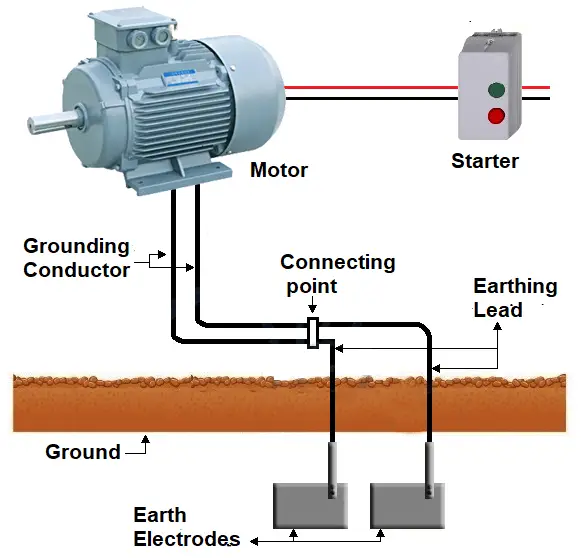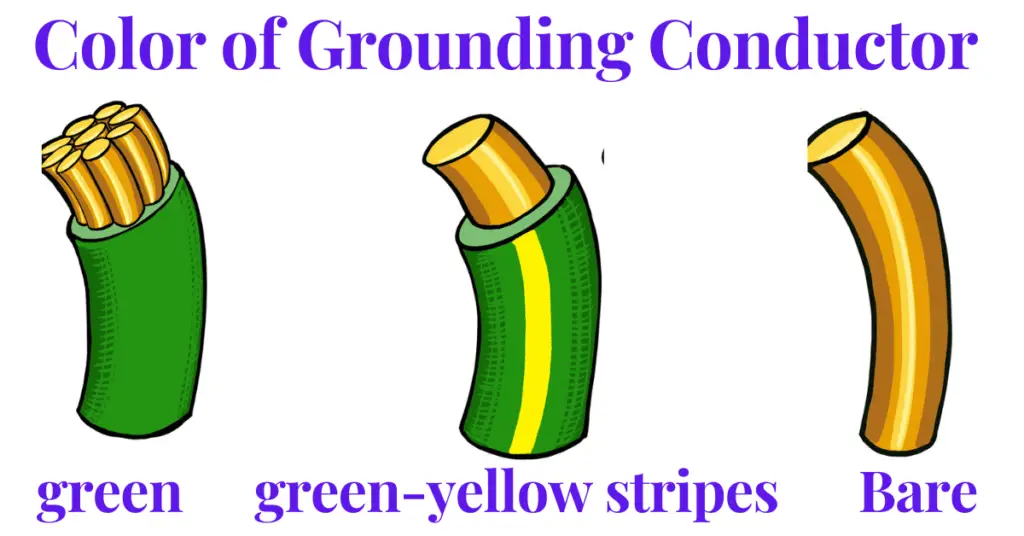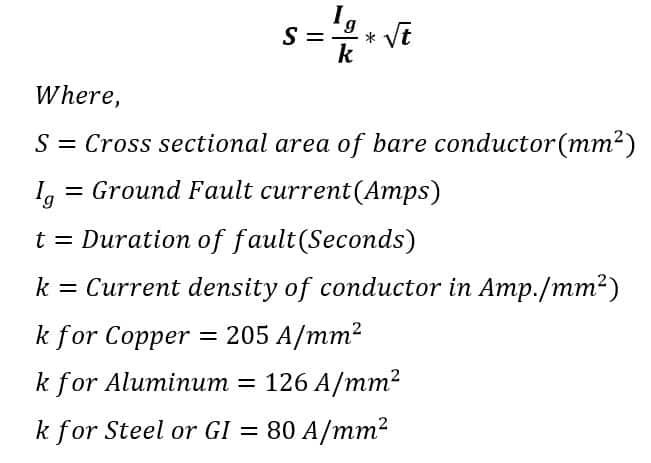What is a Grounding Conductor?
A grounding conductor is a wire or conductor of a very low resistance connected to the earth. The other names of the grounding conductor are “ground conductor” or “case conductor”. The ground wire is connected to the casing or outer part of the electrical panel, junction box, or electrical rotating machines. Therefore, a ground wire is also called a case ground.
The grounding conductor does not carry any electric current during normal conditions. However, during a fault, the case or outer part of electrical equipment attains voltage equal to the system voltage, and hence the current flow from the outer part of the equipment to the ground. Thus, the fault current finds a low resistance path to the ground through a grounding wire.

The ground conductor provides safety for the people and equipment. If the grounding wire is not used, then during a fault the fault current will flow through the human body on touching the equipment’s outer part. Thus, the ground conductor is significant in view of the people’s safety.
Grounding Conductor Vs Grounded Conductor
There are two terms you would have seen in the technical literature, grounding conductor and grounded conductor. Are these terms the same? No- there is a difference between a grounding conductor and a grounded conductor. In a 3-phase 3-Wire star connected circuit, there exists a neutral point. The neutral point’s potential is zero when the current in all three phases is equal.
However, the phase current does not remain equal under fault conditions. Under fault conditions, the voltage develops at the neutral point, depending on the types of electrical faults. The neutral point is connected to the earth to pass the fault current to the ground in order to protect the equipment. The conducting wire that connects the neutral of the supply system to the ground is called “grounded conductor” or grounded neutral conductor or neutral conductor”.
In a 3-Phase 4-Wire system the neutral conductor carries the current in normal conditions for single-phase loads.
Color of Ground Conductor or Wire
The grounding wire does not carry electric current during normal conditions. It carries the current during a fault in an electrical system. Therefore, the ground wire does not need insulation and can be a bare conductor.
However, if insulator wire is used then the color of the wire may be green or green-yellow stripes. As per the IEC-60446, AS/NZS 3000:2007 3.8.3, and BS-7671, the color code for the ground conductor is green-yellow stripes. The green-colored conducting wire is used in Brazil, India, and Canada.

How to Size a Grounding Conductor?
The ground conductor provides a low resistance path to fault current. The minimum size of the grounding conductor must be such that it must be capable to carry 25% of the phase current.
The minimum size of a ground conductor as per NEC(National Electrical Code Academic and Science) is as follows.
| Rating of overcurrent devices in the circuit for equipment, conduit, etc. (Ampere) | Size (AWG or kcmil) | |
| Copper | Aluminum or copper-clad aluminum | |
| 15 | 14 | 12 |
| 20 | 12 | 10 |
| 60 | 10 | 8 |
| 100 | 8 | 6 |
| 200 | 6 | 4 |
| 300 | 4 | 2 |
| 400 | 3 | 1 |
| 500 | 2 | 1/0 |
| 600 | 1 | 2/0 |
| 800 | 1/0 | 3/0 |
| 1000 | 2/0 | 4/0 |
| 1200 | 3/0 | 250 |
| 1600 | 4/0 | 350 |
| 2000 | 250 | 400 |
| 2500 | 350 | 600 |
| 3000 | 400 | 600 |
| 4000 | 500 | 750 |
| 5000 | 700 | 1200 |
| 6000 | 800 | 1200 |
The formula for sizing of ground conductor is;
